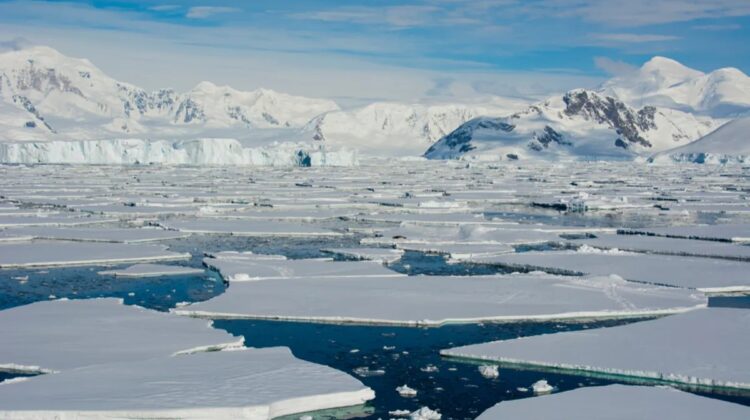
The sample provides clues to Antarctica’s ancient history and the planet’s future.
With the help of an ice core that was taken from the Antarctic and dated to about five million years ago, scientists may now examine the planet’s prehistoric atmosphere. The study’s authors say that the ice in the sample comes from the Pliocene epoch, when temperatures and carbon dioxide levels were higher than they are now. They describe the sample in the journal The Cryosphere.
Scientists can accurately anticipate how the environment is likely to change in the future by studying Earth’s climatic conditions in the past. For this reason, scientists periodically take core samples from the eastern Antarctica ice sheets in the hopes of discovering air bubbles that have been frozen there for countless eons.
The oldest ice that has been recovered from the thickest portions of the Antarctic ice sheets, however, is 800 000 years old, according to the study’s authors.
“The lack of ice older than [one million years old] substantially limits our direct paleoclimate record and increases difficulties when modeling future climate forecasts,” they claim.
Since the Pliocene is thought to be an analog for the current warming caused by anthropogenic activity, scientists are especially eager to get ice samples from that time period. The Ong Valley in the Transantarctic highlands, which is thought to hold ice that is older than eastern Antarctica’s ice sheets, is where the researchers decided to drill in an effort to collect a sample from this time period.
The researchers retrieved a “debris-rich ice core” spanning 944 centimeters (371 inches) in length. To calculate the age of the sample, they examined cosmogenic nuclide concentrations in the rocky debris. Rare isotopes called cosmogenic nuclides, which are created when cosmic rays interact with surface rocks, can be used to determine how long something has been buried.
The ice core was found to have two distinct layers, the younger of which was about 2.95 million years old. An older piece of ice beneath it was estimated to be between 4.3 and 5.1 million years old.
The authors of the study state that the “ages stated here coincide with the Pliocene epoch.”
The two strata really represent two global glaciations, the first of which took place in the early Pliocene (about 4.8 to 4.9 million years ago) and the second of which happened in the late Pliocene (about 3.3 million years ago).
Scientists are particularly interested in studying the Earth’s atmosphere from this era since the latter occurrence was followed by a time when global temperatures were higher than they are now. Doing so could offer crucial hints about how the world will likely be impacted in the upcoming years by rising emissions and temperatures.
Before any such information can be discovered, a more thorough examination of the ice core is required, but the researchers claim their preliminary discoveries at least validate the dates of the two glacial expansions during the Pliocene.
Collectively, their findings “indicate that the continental ice sheet regularly moved into Ong Valley, with evidence of at least two such advances at 2.95 and 4.3-5.1 [million years ago],” they write.

I find reading articles like this and all history reads to be relaxing. Love history and the ice age, past history and things that helped or influenced our world right now. Thank you!